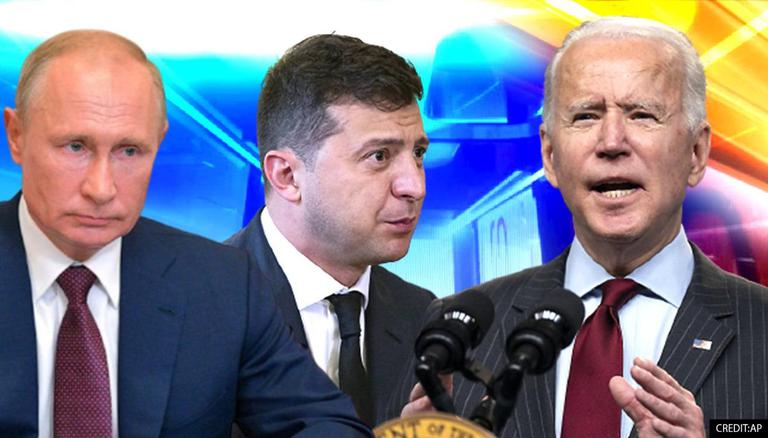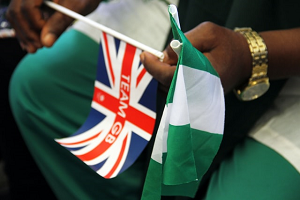Published
1 year agoon

Future historians may come to regard 2022 as a hitch in history which marked the end of one era and ushered in the beginning of another. Major challenge was the attendant threats of nuclear strikes. And the door closed firmly shut on the U.S policy or strategy engagement with China. ISRAEL N. LAR writes.
The past 12 months did bring some good news, most notable, the Covid-19 pandemic eased in many countries. But overall, 2022 brought more bad news than good news.
Turmoil rocked British politics. It is never good when in United Kingdom, the country reputable as a wise empire that once spanned the global landscape had three prime ministers in just two months and also lost the world’s longest reigning monarch. The cause for the turmoil at the 10 Downing Street was the fact that more than fifty members of Boris Johnson’s government resigned in July to protest the security endless parade of scandals under his watch. He agreed to resign and was succeeded by Liz Truss. She lasted just fourty five days. This makes her tenure the shortest tenure of any British Prime Minister in history. Thus, Liz Truss also had the misfortune of being the last Prime Minister that Queen Elizabeth II asked to form a government.
Furthermore, the bigger problem and the broader case for British turmoil is that the Brexit has not produced the “economic bonanza” that proponents promised.
Humanitarian crisis deepened as Russia’s invasion of Ukraine focused attention on Ukraine’s citizens fleeing their homeland for security abroad. That coverage helped obscure humanitarian and refuges crisis elsewhere in the world.
In the same vein, according to recent world report, some 32 million people around the world currently are refugees. This means, they have fled their native country because of persecution, conflict or violence. As internally displaced people who have been forced from their home but continue to live in their native country are included, the number balloons to more than 100 million.
More so, the 13 million is higher than the number recorded at the end of 2021 and or equivalent to the combined population of Ireland, New Zealand.
The surge in refugees and internally displaced people is only in part due to the war in Ukraine.
The humanitarian situation in countries like Syria, Afghanistan, South Sudan and Yemen remains desperate without any signs of a resolution in the underline conflicts. A surge in gang violence in Haiti prompted thousands of Hantians to flee overseas and this sparked talk for foreign interventions to restore order.
In November 2022, one bright spot was that the Ethiopian government and Tigrayan leaders signed a peace deal that ended a two year long civil war that had displaced more than 5.1 million people.
However, international relief agencies and private humanitarian organization are worried that the western efforts to help Ukraine were crowding out to take care of humanitarian crises elsewhere.
Iranian protest regime borne out of protest can also be toppled by them. That reality hunted the leaders of Islamic Republic of Iran, who in 2022 saw the most significant change to their rule since they came to power in 1979.
The protest began in September 2022 when “Morality Policy” in Tehran arrested Mahsa Amini, a twenty- two year old Kurdish Iranian woman visiting Iran’s capital city for failing to cover her hair properly. She died in Police custody. When the news reached her home town, hundreds of people gathered to condemn her death and Iran’s mistreatment of woman.
The protest quickly spread throughout the country as Iranians across social class and ethnicity came out and matched to the slogan “Woman, Life, Freedom.” Iranian leader blamed the United States and Israel for engineering the protest though the driving force was the government’s political repression, corruption and mismanagement of the economy. The government tried to quell the protest with force.
However, by December according to the reports, Iranian security forces had killed as many as 456 protesters on the streets and the government had begun publicly executing protesters convicted in rushed trials for crimes against the state.
In the same vein, the persistence of protesters in the face of government repression promoted speculations that Iran is in the early stages of a new revolution. Moreover, the regime has shown no sign of splintering, and no one has emerged to lead the opposition.
US – China tensions grow as the great power competition between China and the United States is fully underway.
The Joe Biden administration National Security strategy released in October 2022 made the point bluntly; “China harbours the intention and increasingly the capacity to re- shape the international order in favour of one that tilts the global playing field to its benefits”.
However, the United States intends to “win the competition”. “The administration pointed to Beijing’s militarization of the South China sea, its support for Russia’s invasion of Ukraine, its effort to intermediate Taiwan and its rampant theft of intellectuals property as evidence that Beijing’s behaviours had forced the United States to abandon its policy of welcoming China’ rise.
Furthermore, China’s response to USA House Speaker, Nancy Peluski’s visit to Taiwan in August 2022, highlighted just how tensed relations had grown between the two countries.
In October, Biden equally took a major step to limit China’s rise by denying it access to the advanced semi conductor chips and technology escalate to dominating fields like artificial intelligence. Biden also continued to urge friends and allies to take similar tough stance against China.
However, the administration’s tendency to trade unilaterally, lacks lustre, trades initiatives and embraces an industrial policy that controls steel jobs from these same friends. In mid November, Biden and Chinese President XI Jim Pin met on the sidelines of the G-20 Summit. They promised to work to reduce mutual tension and pledge cooperation in areas like climate change and public health.
Nevertheless, mutual suspicious and acrimony are likely to dominate the relationship for years to come.
In late 2021, US and British officials began warning Ukraine. Many European leaders including Ukraine president, Volodimyer Zelensky, dismissed the idea of war. But on the 24 February 2022, Russia launched a “special military operation that it said needed to force the demilitarization of Ukraine. To the surprise of the Kremlin and most military experts, Ukraine withstood the initial onslaught and then began to turn back Russian forces.
Moscow abandoned its bid to take Kyiv and shifted to seizing the Donbas region in eastern Ukraine. In September, the Ukraine launched a counter offense that liberated the northern eastern city of Kharkiv. Six weeks later, Russian forces abandoned the southern city.
However, Ukraine might seek to reclaim Crimen which Russia seized in 2014. However, Russian invasion exposed significant geopolitical divisions.
Western nations rallied behind Kyiv. China and most countries in global south did not, despite their insistence that national boundaries are sacrosanct. Some even blamed the invasion on NATO expansion.
Meanwhile, the rest of the world struggled to adopt to the surprise shock, supply disruptions and food shortages triggered by Russians brazen aggressions.
These and many other events that occured in 2022 to mention but a few, may continue into 2023 and beyond.







